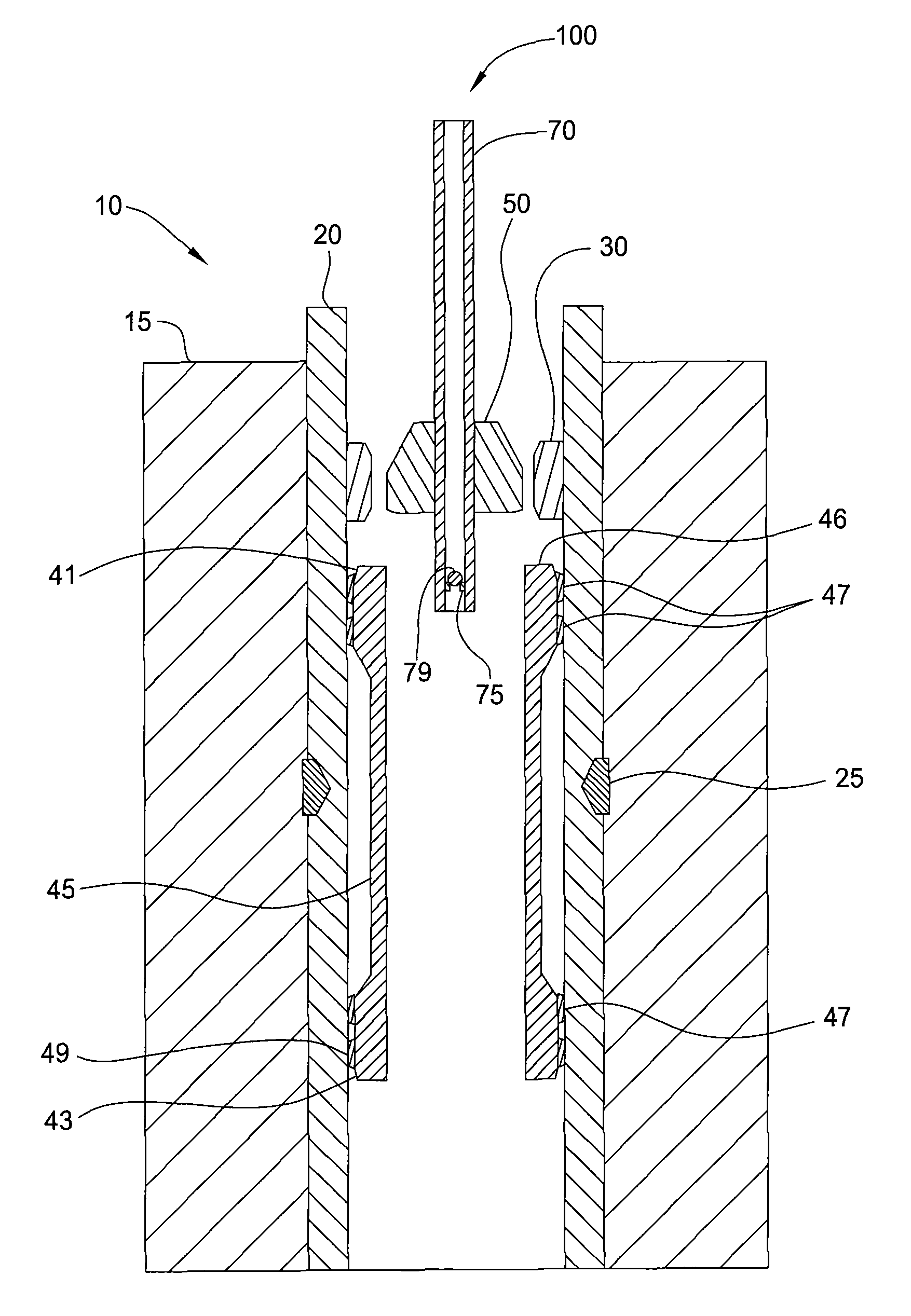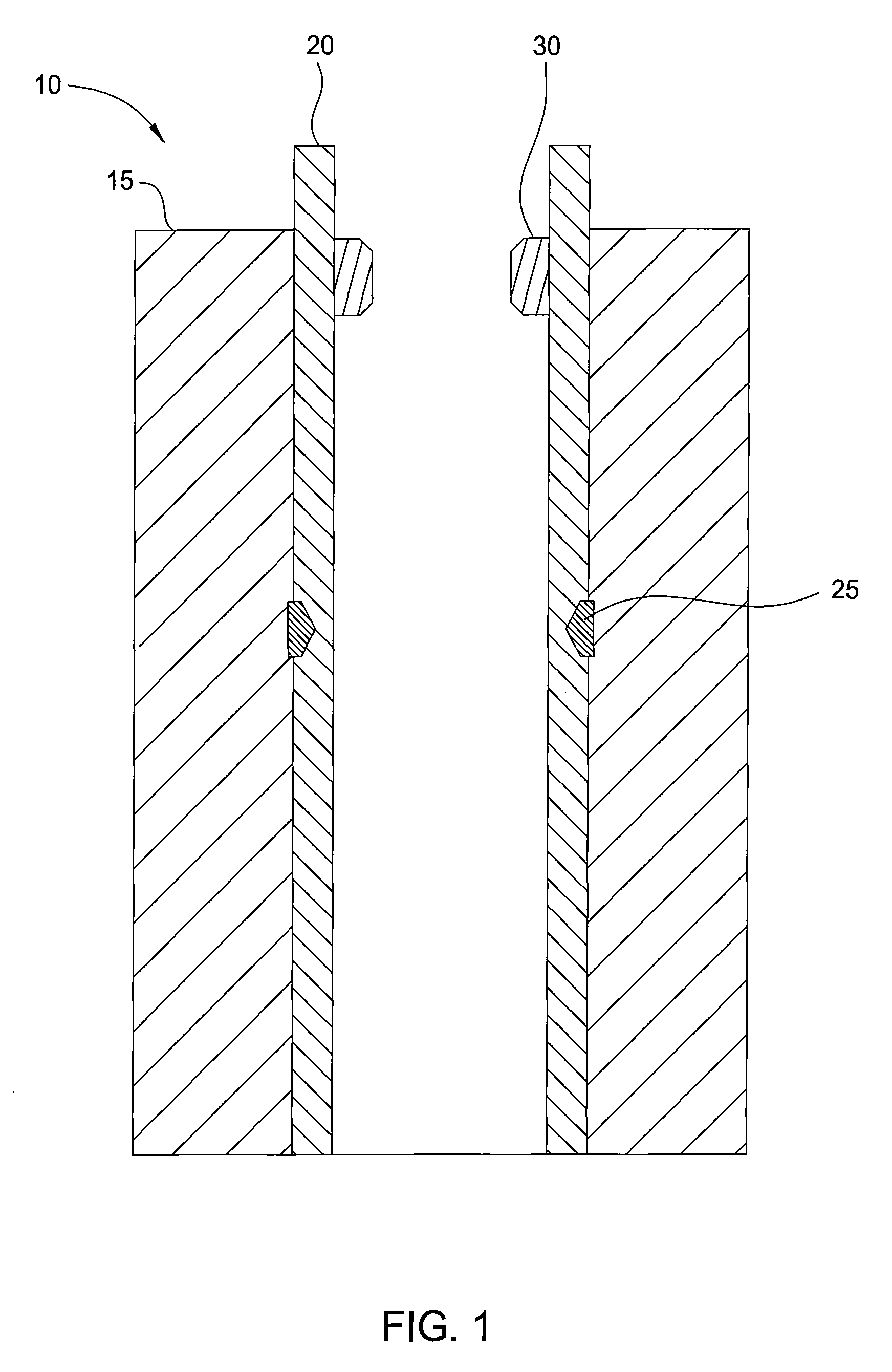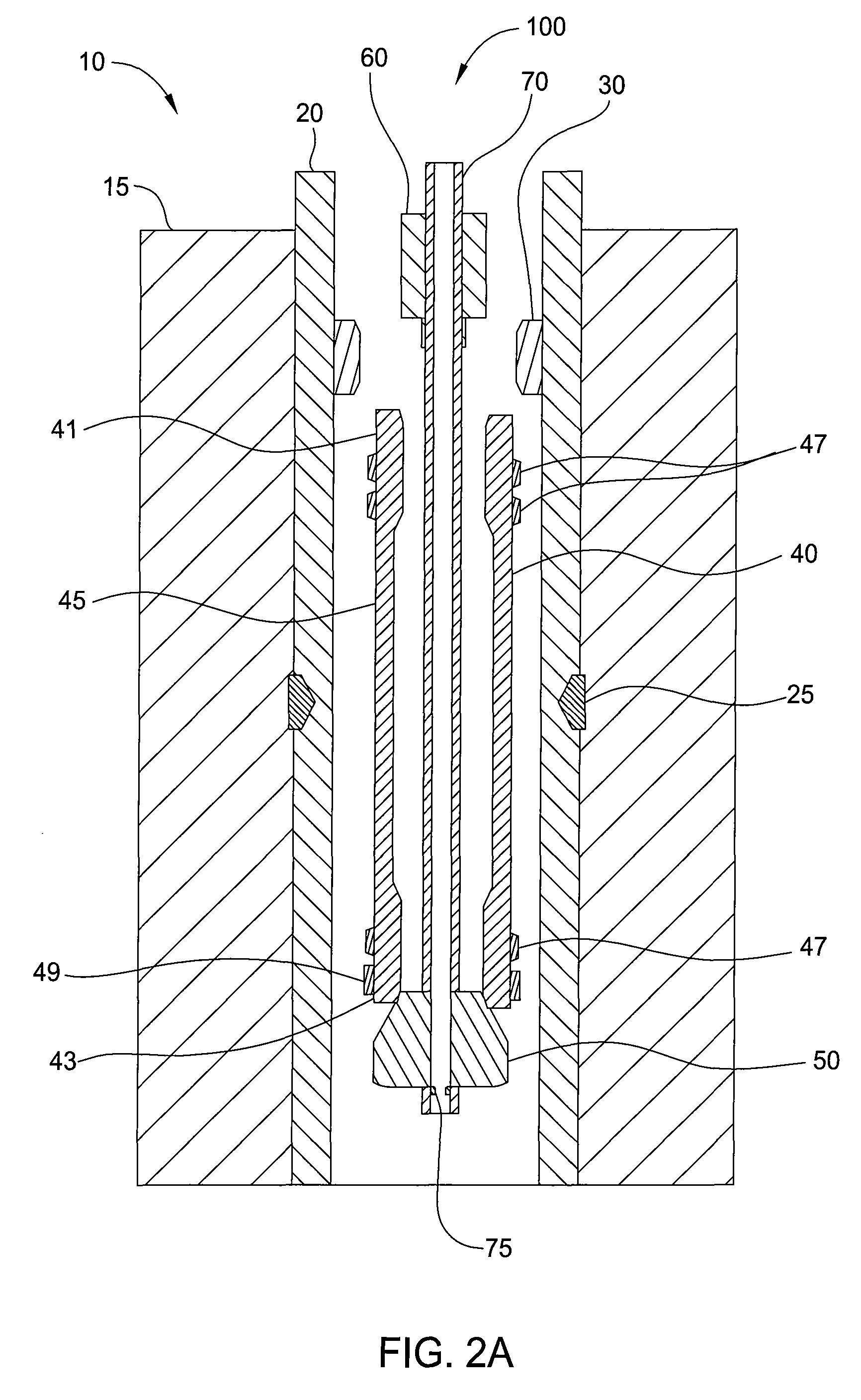System and method to expand tubulars below restrictions
a technology of expansion and tubulars, applied in the field of expansion of tubulars, can solve the problems of increasing the minimum wall thickness requirements of the expandable tubulars to resist collapse or burst forces exerted by these pressures, and the expansion force is limited to about 10%, so as to reduce the expansion force necessary
- Summary
- Abstract
- Description
- Claims
- Application Information
AI Technical Summary
Benefits of technology
Problems solved by technology
Method used
Image
Examples
Embodiment Construction
[0038]FIG. 1 illustrates a wellbore 10 having a casing 20 disposed in an earthen formation 15. The casing 20 may be cemented in the formation 15 and may include multiple sections of casings coupled together to form the casing 20. Located along the length of the casing 20 is a defect 25, such as a leaking connection or a fracture in the wall of the casing 20. The defect 25 may permit the loss of a fluid, such as a liquid or a gas, into the surrounding earthen formation 15 or permit the introduction of unwanted fluids into the casing 20 of the wellbore 10. As a result, dangerous pressure fluctuations may occur during the formation or completion of the wellbore 10. The defect 25 is located below a restriction 30 in the wellbore 10. The restriction 30 may be a downhole packer, safety valve, landing profile, lubricator, tubular, or other obstruction which reduces the inner diameter of the wellbore 20 above the defect 25. The restriction 30 may include a much smaller inner diameter than t...
PUM
 Login to View More
Login to View More Abstract
Description
Claims
Application Information
 Login to View More
Login to View More - R&D
- Intellectual Property
- Life Sciences
- Materials
- Tech Scout
- Unparalleled Data Quality
- Higher Quality Content
- 60% Fewer Hallucinations
Browse by: Latest US Patents, China's latest patents, Technical Efficacy Thesaurus, Application Domain, Technology Topic, Popular Technical Reports.
© 2025 PatSnap. All rights reserved.Legal|Privacy policy|Modern Slavery Act Transparency Statement|Sitemap|About US| Contact US: help@patsnap.com



